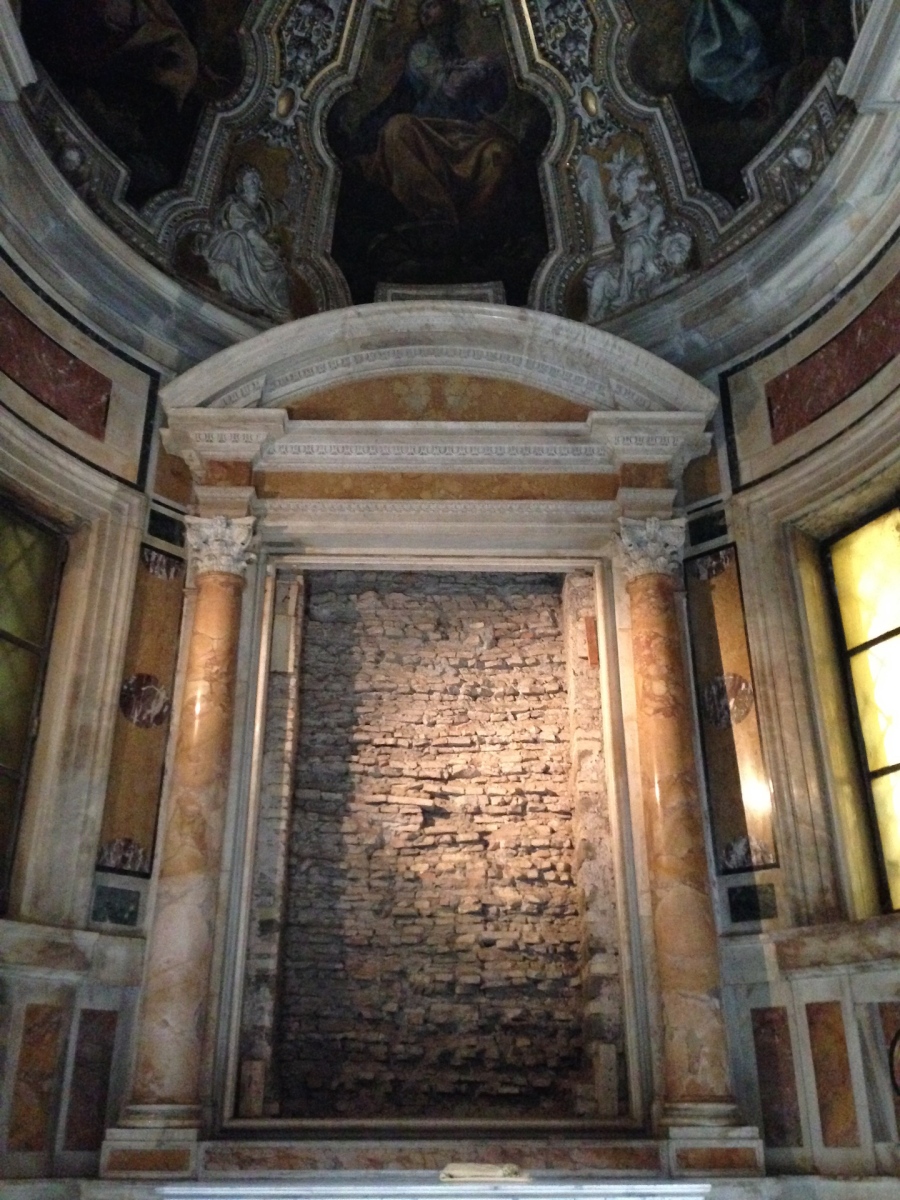
There’s a main thoroughfare through the heart of central Rome that leads from Largo Argentina to the river and the Vatican. Lots of buses (and cars and everything else) take this road including the useful but infamous 87 and 40. Called the Corso Vittorio Emanuele II, the road zips by many of the loveliest church in the city including Sant’Andrea della Valle and San Giovanni dei Fiorentini. Even if you don’t recognize the street name, if you’ve been to Rome, you’ve walked or ridden down the Corso Vittorio. It’s unavoidable.

I’ve walked this street or taken a bus down it hundreds and hundreds of times and every single time I would think to myself while zooming past the Chiesa Nuova: “man, I should really go in there.” In fact, the Chiesa Nuova looms large in my Roman history. During only my second summer in the city I had a rather dramatic emotional episode while pacing and crying in the piazza in front of the church following a pretty epic take-down by one of my former professors at a dinner. Life lesson: professors can be giant dicks to their grad students. But I digress. Maybe for that reason I’ve avoided going in the church. But now that I’m a doctor and will never have to deal with that particular dick again, I thought it was about time.

The Chiesa Nuova, formally known as Santa Maria in Vallicella, is thoroughly baroqued and gold and overblown. With my Renaissance 4 lyfe policy, I believe you all know how I feel about the baroque. And the Chiesa Nuova did not disappoint in all its gold-spangled, putti-covered (those winged cherubs you see everywhere) glory. In truth, that stuff generally turns me way, way off.

But there can be some charm to all this baroque nonsense and the Chiesa Nuova is perfectly positioned to be a welcome break from the crowds and the heat. There were probably five other people in the whole church when I was there so it’s a respite from the noise and chaos from Rome. And like nearly all the churches there the dim interior provided a break from the hot, hot heat and let me luxuriate for a half hour outside of the blazing sun. Though I am in no way personally religious, I love passing time quietly in the pews of Roman churches because the very dust swirling in the air feels charged with history and the unknowable.

Conclusion: Chiesa Nuova = totally worth it and I don’t know why I avoided it for so long.

Not far off the Corso Vittorio is another church that I had managed to miss for so many years. Sant’Ivo, with it’s swirling lantern is tucked away inside the courtyard of the Archivio di Stato. And I know precisely why I had never visited this teeny paragon of extravagant, curvilinear baroque architecture: it’s only open on Sundays from 9am-noon. Not great, Bob. Getting around Rome on a Sunday can be extra complicated and three hours a week is not the most conducive to even the most long-term Roman visitor’s schedule. So, I’d never been.

And I regret that tremendously now. It’s perfect. The perfect place to sit quietly and marvel at the wonder of human ingenuity. And while in this particular instance it wasn’t all that quiet (there was a lecture group from an American study abroad class there, coincidentally taught by a woman that I would later come to know and present at a conference with- small world!), the almost disorienting architecture of the space makes it worth it. The star-shaped interior and rippling ceiling is one of the best representations of baroque architecture that exists and utterly, utterly worth your time.
Conclusion: from now on, Sunday mornings at Sant’Ivo!

Beautifully seen and photographed.
Beatifully seen and photographed.
Thanks! It’s easy to take nice pictures when you have such a nice subject.
So what is the deal with the rock-filled frame? Stolen art? Controversial window that had to be removed? Hmmm?
Nothing so exciting unfortunately. The painting was removed for an exhibition is all. The stones are the wall which would usually be covered by the painting.
They are beautiful too. But I would have thought there would be a layer of insulation or moisture barrier or something between them and the painting.
I used to work in a historical park here in Texas, and I was taught to be fanatical about climate control for our precious collection from way back in the 1930s – it was a revelation to me to go to the Vatican Museums and see how they left the windows open and everything. I liked it, it felt more like actual life and less like a mausoleum.
Lovely to have you back Brenna. Excellent value-for-words post, as usual!
Thanks!
[…] the Chiesa Nuova and Sant’Ivo, San Nicola in Carcere is ridiculously centrally located in Rome in one of the most obvious sites […]